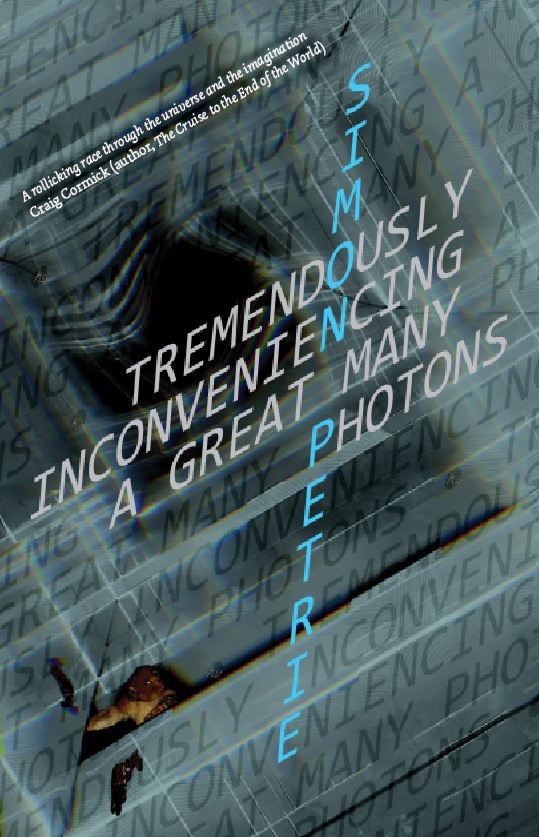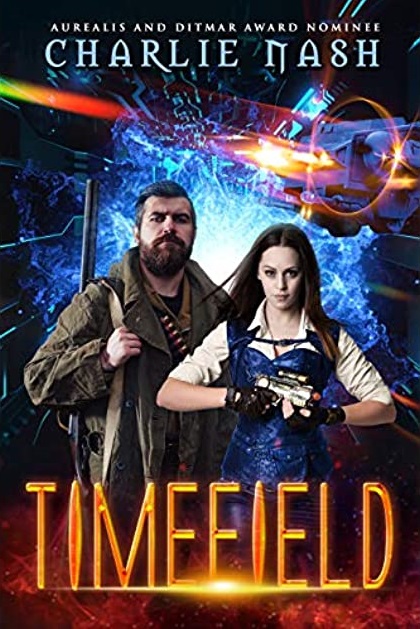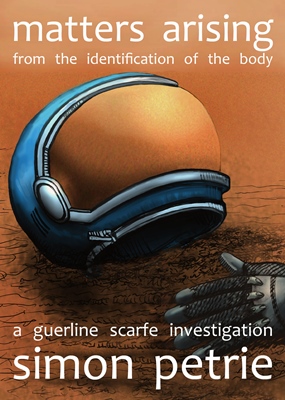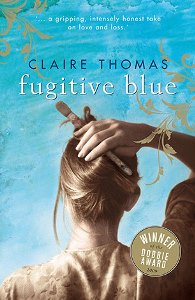(This is a book review — of Letters from Tove, edited by Boel Westin and Helen Svensson and translated by Sarah Death — but, as sometimes happens with my Jansson-related reviews, it has quite a bit of digression as well. If you’re not in the mood for the digression, just scroll quickly past the text between the two cover images, which are respectively those of the UK (Sort Of Books) and US (University of Minnesota Press) editions…)

I first encountered Moomin at age 11, picking a book off the shelf at my school library. It was a mistake: I was looking for science fiction. The cover illustration, in concert with the ‘Moom’ part of the title, suggested to my mind that perhaps these were creatures who lived on the Moon; in which case I was interested. But the illustration was whimsical, which wasn’t exactly what I’d been looking for. Ah, well, my eleven-year-old mind thought, perhaps it’ll be funny if it’s not serious. I liked humorous books too.
As it turned out, it wasn’t SF, and it wasn’t significantly humorous. And Moomins didn’t live on the Moon, but in Finland.
It seemed slightly too young a book, heavily illustrated and all that. But something about it resonated, and Moominland Midwinter became my portal into the world of the Moomins. Four weeks later, I’d made my way, in a somewhat disordered fashion, through all eight of the classic Moomin books (by which I mean the sequence from Comet in Moominland to Moominland in November) for the first time. I’ve repeated the journey several times since.
Even back then, I was intrigued not just by the Moomins, but by their creator. (What sort of name was ‘Tove’, anyway? Were her parents Lewis Carroll aficionados?) The back flaps of the library books’ dust jacket covers stated that ‘[Tove Jansson] and her mother and brother are the only inhabitants of a small island in the Gulf of Finland, an hour’s rowing from the next island’, which was at best a half-truth even then. (Not about the rowing, I mean, but about the cohabitation.) But children’s authors in that era were not allowed to be lesbian, or bisexual, or of any stripe other than straightforwardly and undemonstratively heterosexual, if the matter were even ever broached in public. Which, of course, it wasn’t.
For at least the decade after finding that book on the shelf, I searched, largely in vain, for more information about Jansson, and for more of her work. From the other side of the world, back then, there wasn’t much visible. I reread the Moomin books (of which, by now, I had my own Puffin paperback editions). I scoured bookshops, both new and secondhand. Sometimes this bore fruit: I found a time-worn copy of Sun at Midnight (Oswell Blakeston), a travel book detailing a Finnish summer holiday (during, I think, 1956 or 1957) which features a four-page visit to Tove Jansson on her island. (It’s a fascinating record of the encounter, as much for what is left unstated as is conveyed, and it captures Jansson’s mien — her friendliness, her sense of social obligation, but also an underlying standoffishness — quite expertly.) I also found a heavily-discounted copy of Marcus Crouch’s The Nesbit Tradition: The Children’s Novel 1945—1970, which includes a fair two-page exploration of the tone and scope of the Moomin books (alongside a scandalous characterisation of Little My as ‘appalling’, which says more to my mind about Crouch than it does about Little My). And I found The Summer Book, of which in the early eighties there were still copies of the Penguin edition available in one or two Christchurch bookstores. This led me to the realisation that Jansson wrote for adults as well as for children. By this point, the only two other books of Jansson’s adult fiction to have been translated into English — Sculptor’s Daughter and Sun City — were already out of print, but there were copies available in the Canterbury Public Library, which I borrowed. And photocopied. (I don’t still have those photocopies; they have presumably fed a few generations of silverfish. Meanwhile, secondhand prices for the never-reprinted Sun City, which I suspect probably qualifies as Jansson’s least convincing novel, have skyrocketed; my advice to the curious is that that particular book is not worth several hundred dollars for a secondhand copy, even for the sublime incongruity of seeing Tove Jansson name-drop Seattle acid-punk band The Electric Prunes… which itself is an incident I really think needs to be explored further.)
The perceptive among you — which, hopefully, is both of you — will notice that this is quite a long way into my review, and still no review. I’m getting there. Sometimes, like Snufkin’s attitude to tune-finding, these things need to be walked around to. Awaited. Preluded.
The Who’s Who entry for Tove Jansson, in the early eighties, let slip that there were other books — Moomin picture books and novels for adults — which remained untranslated into English. In 1981, I decided to learn Swedish, so I could read the untranslated books. But for this plan to work, obviously I’d need to find a way to buy the books, which weren’t available in NZ. I wrote, first, to the embassy (actually the wrong embassy to start with, because I’d assumed the Swedish-language books would be published in Sweden), and was directed, after next writing to the correct embassy, to the publisher (actually the wrong publisher to start with, because the Finnish Embassy’s information was out of date). But the former publisher directed me to Schildts, her then-current publisher, so I contacted them about purchasing copies of the books. That shipment of 14 books — the six books of her adult fiction then available, the four large-format colour Moomin picturebooks, and my four favourites among the Moomin novels I’d already read several times — was probably the most exciting delivery I ever received, even if I never did actually get around to properly learning Swedish. (I did make an effort, and I have a smattering even now; but I stopped far short of fluency or even reliable comprehension.) Jansson is dead now, and the books are of course almost all readily available in English translation, as so often happens when famous foreign-language authors pass away; but I still regret that I didn’t master the language back then.
I also wrote a letter, back then, to Tove Jansson. And received a reply from her. Which I then somehow lost. I won’t overburden this already preamble-heavy book review with the details of that sequence: you can choose to read it in this earlier post instead, and I hope you will.

Tove Jansson was an assiduous correspondent. She wrote many thousands of letters to the many thousands of fans who wrote to her over the years. She also wrote detailed and incisive letters to friends, lovers, and family members, updating them on a multitude of events in her life, and on her musings on life and her own difficult-to-settle identity. It’s a selection of these latter, often deeply personal, letters which have been collected in Letters from Tove, edited by Jansson’s biographer Boel Westin and longtime publishing contact Helen Svensson. (And if my own personal Jansson-related backstory is allowed to intrude one final, final time into what, by now, should really be asserting itself as a book review rather than a memoir, it was only on picking up my copy of Letters from Tove prior to commencing this review that I realised the name ‘Helen Svensson’ was one I’d encountered before… because, although I’ve shamefully misplaced my letter from Jansson herself, I still have a typewritten letter, on blue Holger Schildts letterhead paper and dated 19 October 1982, in which Helen Svensson provides me with prices for the titles of Jansson’s Swedish-language books. Lyssnerskan (The Listener) and Sommarboken (The Summer Book) were, she informed me, unfortunately sold out… but when I received my shipment of Swedish-language Jansson books, those two were included nonetheless, even though I’m fairly sure the money order I’d sent Schildts didn’t cover them.)
Letters from Tove is divided into nine sections, organised first by correspondent and then in chronological order for that correspondent. Some sets of letters encompass decades, and therefore the stretches of time and events covered have a tendency to overlap; to read the book in sequence is to follow a somewhat erratic trail through, broadly, the middle half-century of Tove Jansson’s life. It’s a busy life, cosmopolitan, didactic, sometimes sharing deeply personal information. What one gains from shoulder-surfing Tove Jansson’s letters in such depth — and it is a long book, far longer than any of the novels she wrote — is something that is in some respects less satisfying than either a fictional account or a true biography, for it lacks the artistry and pacing of one and the completeness and detail of the other. We don’t get to read, either, her correspondents’ replies to her, which makes the reading experience additionally unbalanced. And yet there’s also a strong sense in which this collection of messages to family and friends (and sometimes more than friends) is more informative about Tove Jansson, about the person she was and the experiences she faced, than any biography could ever be. This is Jansson, after all, outlining her own thoughts in her own words. Her talent as a writer and a highly observant student of human nature shines through repeatedly.
Jansson is frequently very revealing of herself in her correspondence, particularly in the long section of letters to her US-emigrated friend Eva Konikoff. The Konikoff letters explore from several angles Jansson’s worries at Finland’s ‘winter war’ with Russia in which her brother Per Olov [’Peo’] was a combatant (and on which she found herself bitterly opposed to her father Viktor [’Faffan’], whose outspoken patriotic hawkishness and racism contrasted sharply with her own fundamentally pacifist convictions). Later letters to Konikoff deal at length with Jansson’s explorations of sexual identity, her unexpected love affair with theatre director Vivica Bandler, her long romance with (and ultimately lapsed engagement to) left-leaning politican and philosophically-minded author Atos Wirtanen, her progression through a series of relationships with other men and women and, ultimately, her decades-long partnership with graphic artist Tuulikki Pietilä [‘Tooti’]. These latter figures also feature as correspondents in their own right, addressed in their own sections of the book; the letters to Tooti are also highly informative and engaging, and free of the sometimes-cloying lovesickness that clogs the first few letters to Vivica Bandler. Elsewhere, the letters explore the tension between Tove’s mother Signe Hammarsten Jansson [’Ham’] and Tooti while the three of them, in the decade after Faffan’s death, are often the sole inhabitants of the Jansson family’s small island Bredskär (and, later, of Klovharun, the island Tove and Tooti lease for themselves). There are tidbits on as-yet-untranslated stories and newspaper articles, commissions she undertook for French radio and television, and incidents which inform both the Moomin stories and her other fiction. It still hurts to learn that there were two chapters culled from Finn Family Moomintroll so as to reduce it to a more ‘acceptable’ length for publication, though it doesn’t seem to have concerned the author greatly: alongside evident pride in the Moomin stories’ capacity to reach both a child and an adult audience, there’s also an open ambivalence at the cultural phenomenon of Moominish popularity, and a very definite sense of relief at the conclusion, in 1959, of her seven-year contract to produce the daily Moomin cartoon strip. The people around her are also delineated in considerable detail, particularly her own family members (parents and younger brother Lars [’Lasse’] somewhat more than Peo) and longtime lovers.
As one might expect, the tone of each series of letters is somewhat distinct: Jansson expresses herself differently to her parents than to her friends, and otherwise again to current or former lovers. But there is nonetheless, incrementally, a life (or more accurately, a several-decades-long segment of a life) that emerges consistently from these letters, a career in which ambition primarily as an artist morphs gradually into success primarily as a writer, with the milestones in this traversal interspersed with personal observations, random minutiae, and an aggregated process of self-discovery.
The letters are candid yet discreet in their phrasing and presentation. They are at times wonderfully chaotic: there are shopping lists interspersed with observations on love, death, and art; there is gossip alongside the deft portrayal of minor and background characters. (The background characterisation is itself quietly fascinating. I found myself wondering, for example, whether Jansson’s colourful and scientifically-minded maternal uncles might collectively have been the inspiration for the character of Hodgkins in The Exploits of Moominpappa; and there are many other ways in which the letters add intriguing colour and depth to the Moomins’ backstory.)
Occasionally, the letters resonate oddly with contemporary life in a world which finds itself in ongoing crisis. Jansson’s background canvassing of the prelude to World War Two (she was holidaying in Italy in June 1939), in a sequence of letters to her mother, might well seem unsettlingly familiar to those who wish to recall the foreshadowing of the past few months. There are similarly eerie undercurrents in Jansson’s wartime letters to her friend Eva Konikoff, with their focus on the sudden slow-grind horror of war and the haphazard mortality which accompanies it. Against such concerns, there are more hopeful strands as well: the enduring friendships forged, the relationships, the interstitial ‘ghost’ (gay) scene which Jansson somewhat wryly finds herself a member of. There’s a strong ‘life goes on’ flavour to the letters, and that, I think, is a strength of this book. I’m not sure that, having read it, I’ll ever reread it in its entirety; but I am certain I’ll browse through it again, searching from time to time for a half-remembered phrase, observation, or anecdote. There’s a useful index.
It’s not a novel, nor an autobiography. These are letters that were each written for their moment in time, and all of them private and personally-focussed; there should be no expectation that they remain in any sense current, or even illuminative to others than their intended correspondents. There isn’t always sufficient scene-setting to make sense of what’s on the page. Nonetheless, the book’s editors (perhaps ‘curators’ would be the more appropriate term) have done well to organise and to provide context and explanatory annotations. And Jansson’s voice is, often enough, wonderfully vivid. There are some gorgeous moments. I think it’s fair to say that Letters from Tove has given me a better understanding of a writer, illustrator, artist and cartoonist whose work I only ever found out about through a sort of happy accident.
Jansson is deservedly celebrated as the woman who gave to the world Moominvalley and its intriguing inhabitants, but she was always more than that. Letters from Tove isn’t the place I’d recommend for readers to discover her — go to the Moomin series, or to The Summer Book or Sculptor’s Daughter for that — but it is, most definitely, a place to find her.













